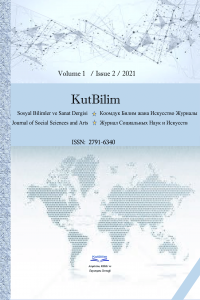SELF-REGULATION DEVELOPMENT AND THE INTERNET ADDICTION: AN EFFORT TO FIND THE CONNECTION
SELF-REGULATION DEVELOPMENT AND THE INTERNET ADDICTION: AN EFFORT TO FIND THE CONNECTION
Self-regulation development is considered to be a complicated multi-level process occurring under the influence of various factors. Multiple studies are trying to explain the problematic Internet use from the point of view of self-regulation deficits, but they consider the situation here and now. The current research is aimed at finding out the defects of self-regulation development in the age 7-8, 11-12 years and establishing their connection with the characteristics of Internet pathological use in the age of 20-21 years. Self-regulation is considered from the point of view of three-level model introduced by Nikolaeva. At first, we compare the results of the neuropsychological tests with the level of learning motivation and academic results, in the age of 20-21 years the Meaning of the Life Orientations Test (MLOT), the Self-Regulation Profile Questionnaire (SRPQ) and the Chen Internet Addiction Scale (CIAS) have been used. Statistically significant differences in the CIAS indexes have been found out among the groups with different self-regulation levels. We have confirmed the connections between the self-regulation levels on each stage of the research but we cannot yet establish statistically significant connections between the results of the third stage with the results of the previous ones. However, we have groped for some tendencies to be confirmed in future studies.
___
- 1. Billeux, J.; Van der Linden, M. (2012). Problematic use of the Internet and self-regulation: a review of the initial studies. The Open Addiction Journal. Volume 5, pp. 24-29. DOI: 10.2174/1874941001205010024.
- 2. Bozhovich, L.I. (1995). Issued of personality development: selected psychological works. MODEK. ISBN 5-87224-086-4.
- 3. Crocket, L.J.; Raffaelli, M.; Shen, Y.L. (2006). Linking self-regulation and risk proneness to risky sexual behavior: Pathways through peer-pressure and early substance use. Journal of Research on Adolescence, 2006, Volume 16 (4), pp. 503-525.
- 4. Gardner, T.W.; Dishion, T.J.; Connell A.M. (2006) Adolescent self-regulation as resilience: Resistance to antisocial behavior within the deviant peer context. Journal of Abnormal Child Psychology, 36 (2), pp. 273-284. https://doi.org/10.1007/s10802-007-9176-6
- 5. Grebenyuk, O.S.; Grebenyuk, T.B. (2000). Foundations of pedagogy of individuality. Kaliningradsky Universitet. ISBN 5-88874-169-8.
- 6. Kulagina, I.Y.; Gani, S.V. (2011). Conditions of the learning motivation development in the first classes. Psychology of Education, 2011, Volume 2, pp. 13-23.
- 7. LaRose, R.; Lin, C.A.; Eastin, M.S. (2003). Unregulated Internet usage: Addiction, habit, or deficient self-regulation? Media Psychology. Volume 5 (3), pp. 225-253. https://doi.org/10.1207/S1532785XMEP0503_01
- 8. Leontiev, D.A. (2000). Test of the Meaning of Life Orientations. 2nd Ed., Smysl. ISBN 5-89357-088-X.
- 9. Malygin, V.L. (2011) Internet-addictive behavior. Criteria and methods of diagnostics. MGMSU.
- 10. Markova, A.K.; Matis, T.A.; Orlov, A.B. (1990) Forming learning motivation. Prosvetschenie. ISBN 5-09-001744-1.
- 11. Morosanova, V.I. (1998). Individual style of self-regulation: phenomenon, structure and functions in the voluntary activity of a person. Nauka: Moscow, Russia. ISBN 5-02-013166-0.
- 12. Nikolaeva, V.V. (1993) On the psychological nature of alexithimia. In Human Corporeality: Interdisciplinary Research; Nikolaeva, V.V.; Tischenko, P.D., Eds.; FO SSSR. pp. 80-94. ISBN 5-201-02902-7.
- 13. Ovcharova, R.V. (1996). Reference manual of school psychologist. Prosvetschenie. ISBN 978-5-09-007270-0.
- 14. Osnitskiy, A.K. (2010). Psychological mechanisms of independency. IG-SOTSIN: Moscow, Obninsk, Russia, 2010. ISBN 978-5-91070-053-0.
- 15. Pelco, P.E.; Reed-Victor, E. (2007). Self-regulation and learning-related social skills: intervention ideas for elementary school students. Preventing School Failure, 2007, 51(3), pp. 36-42.
- 16. Rafaelli, M; Crockett, L.; Shen, Y.L. (2005). Developmental stability and change in self-regulation from childhood to adolescence. The Journal of Genetic Psychology, Volume 166 (1), pp. 54-76.
- 17. Sedova, E.O. (2015). Correction of defects of developing self-regulation in younger schoolchildren. PhD Thesis. Moscow State University of Psychology and Education. 23.04.2015.
- 18. Semenovich, A.V. (2002). Neuropshychological diagnostics and correction in childhood. Akademia: Moscow, Russia, 2002. ISBN 5-7695-0772-1.
- 19. Smirnova, E.A. (2013). Features of family upbringing Internet-dependent adolescents. Yaroslavl Pedagogical Bulletin, Volume 1 (II), pp. 246-252.
- 20. Sultanova, A.S. (2005). Development of child in prenatal period. In Reading Book of Perinatal Psychology; Vasina, A.N., Ed. URAO: Moscow, Russia, pp. 142-153. ISBN 5-204-00417-3.
- Başlangıç: 2021
- Yayıncı: Kutbilim Araştırma, Kültür ve Dayanışma Derneği
Sayıdaki Diğer Makaleler
AN ASSESSMENT OF THE DEMOGRAPHIC STRUCTURE OF KYRGYZSTAN
AN ANALYSIS OF “STANCE DEVICES” IN SOCIAL SCIENCE RESEARCH ARTICLES BY NATIVE AND TURKISH WRITERS
REPRESENTATION OF PRESCRIPTIONS OF COMMUNICATIVE BEHAVIOR IN THE KYRGYZ LANGUAGE
THE NATIONAL GAME OF THE KYRGYZ " KӨK BӨRU " AND ITS GENESIS
SELF-REGULATION DEVELOPMENT AND THE INTERNET ADDICTION: AN EFFORT TO FIND THE CONNECTION
Ekaterina SEDOVA, Tatiana GORYACHEVA
ÂŞIK KURBÂNİ DESTANINDAKİ FİİL TEKRARLARIYLA, BAĞLAÇLARLA OLUŞAN İKİLEMELER
